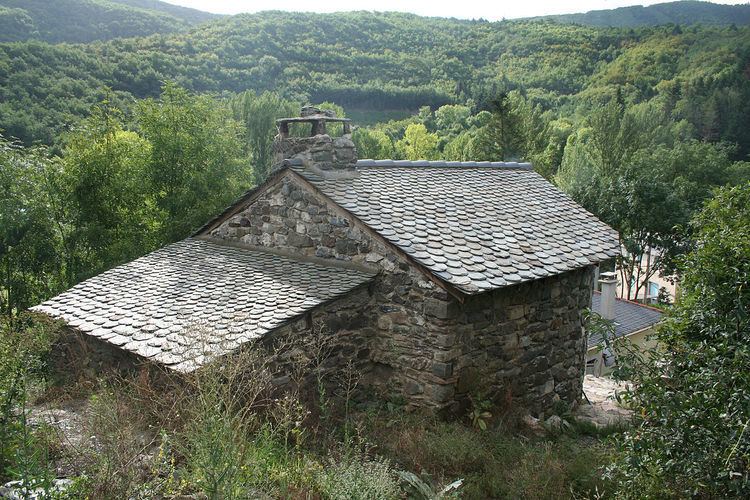Population (2009) 23 Area 16.57 km² | Region Occitanie Canton Camarès Time zone CET (UTC+1) Local time Wednesday 8:59 PM | |
 | ||
Weather 7°C, Wind W at 14 km/h, 88% Humidity | ||
Arnac-sur-Dourdou (Occitan: Arnac) is a French commune in the Aveyron department in the Occitanie region of southern France.
Contents
- Map of 12360 Arnac sur Dourdou France
- Geography
- History
- Administration
- Demography
- Cultural Events and Festivals
- Sites and monuments
- References
Map of 12360 Arnac-sur-Dourdou, France
The inhabitants of the commune are known as Arnacois or Arnacoises
Geography
Arnac-sur-Dourdou is a sparsely populated commune in the extreme southern corner of Aveyron some 50 km west by north-west of Saint-André-de-Sangonis and 8 km east by north-east of Murat-sur-Vèbre in the heart of the Lacaune mountains. The western border of the commune is also the border between the departments of Aveyron and Tarn while the southern border is the border between Aveyron and Hérault. Access to the commune is by the D92 road from Brusque in the north which is a tortuous mountain road going to the village and continuing west to change to the D162 at the commune border then south to join the D622 to Murat-sur-Vèbre. The D12 road from Brusque to the south forms the eastern border of the commune and road D174 connects the village to this road. The commune is mountainous and heavily forested.
The Dourdou de Camarès river flows through the commune and the village from east to west gathering numerous tributaries flowing from all corners of the commune.
History
Until the French Revolution the Parish of Arnac was part of the community of Brusque. Saint-Benoît-d'Arnac was then an annex of the Parish of Saint-Pierre-des-Cats (currently the commune of Mélagues). After the Revolution Arnac was part of the commune of Mélagues. It was in 1872 that the commune of Arnac-sur-Dourdou was founded. Today the village consists of many second homes which are often the properties of descendants of the past inhabitants of the village.
Administration
List of Successive Mayors
(Not all data is known)
Demography
In 2009 the commune had 23 inhabitants. The evolution of the number of inhabitants is known from the population censuses conducted in the commune since 1872. From the 21st century, a census of communes with fewer than 10,000 inhabitants is held every five years, unlike larger towns that have a sample survey every year.
Sources : Ldh/EHESS/Cassini until 1962, INSEE database from 1968 (population without double counting and municipal population from 2006)
